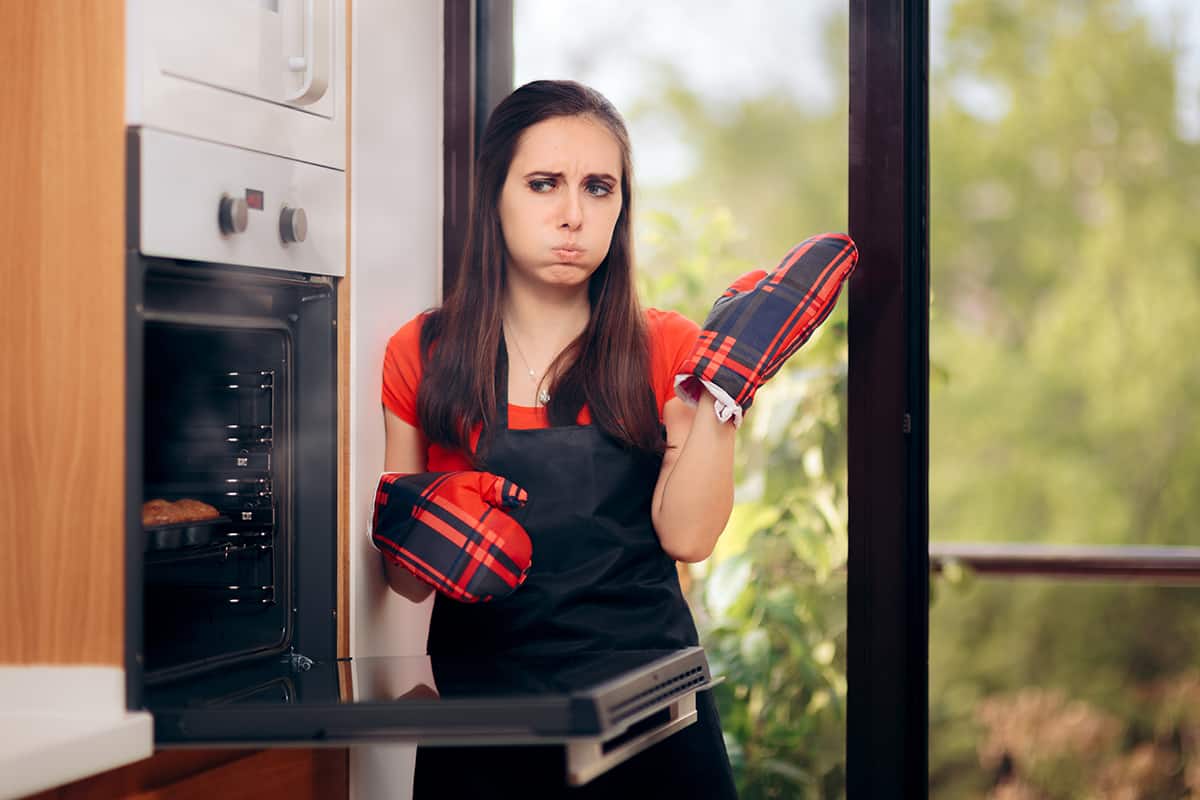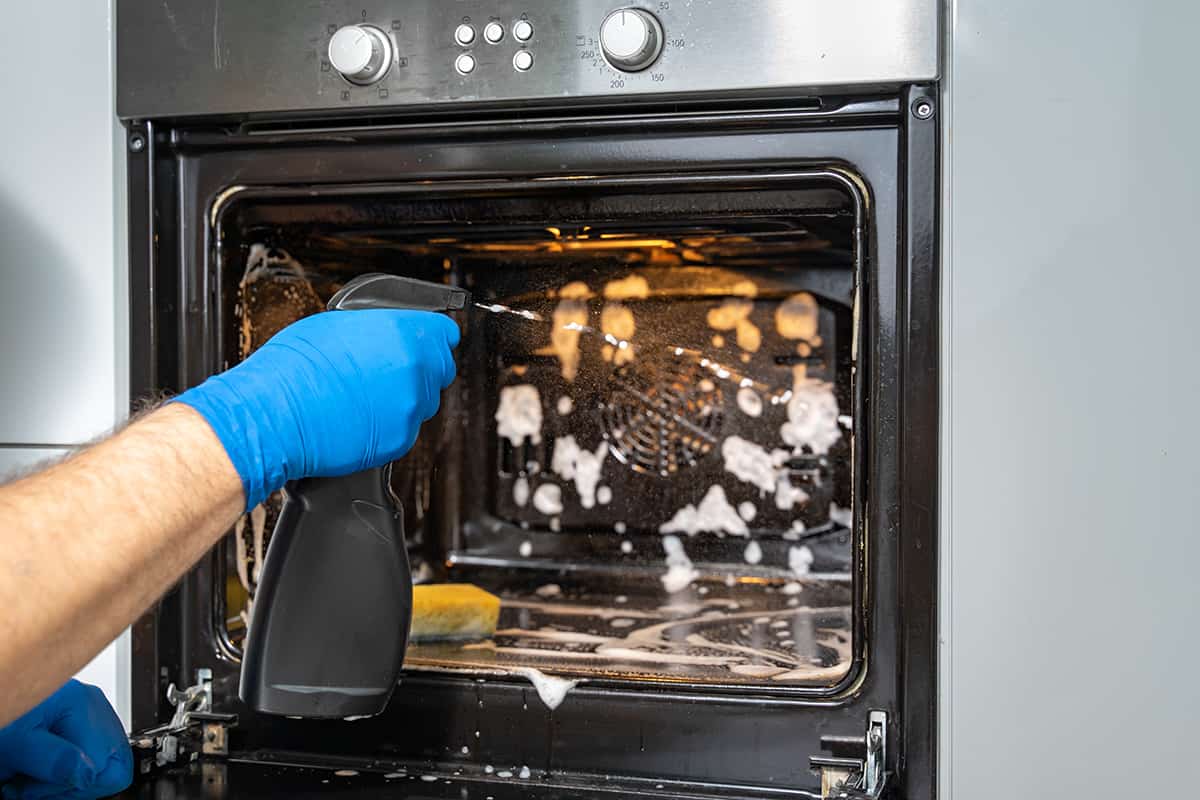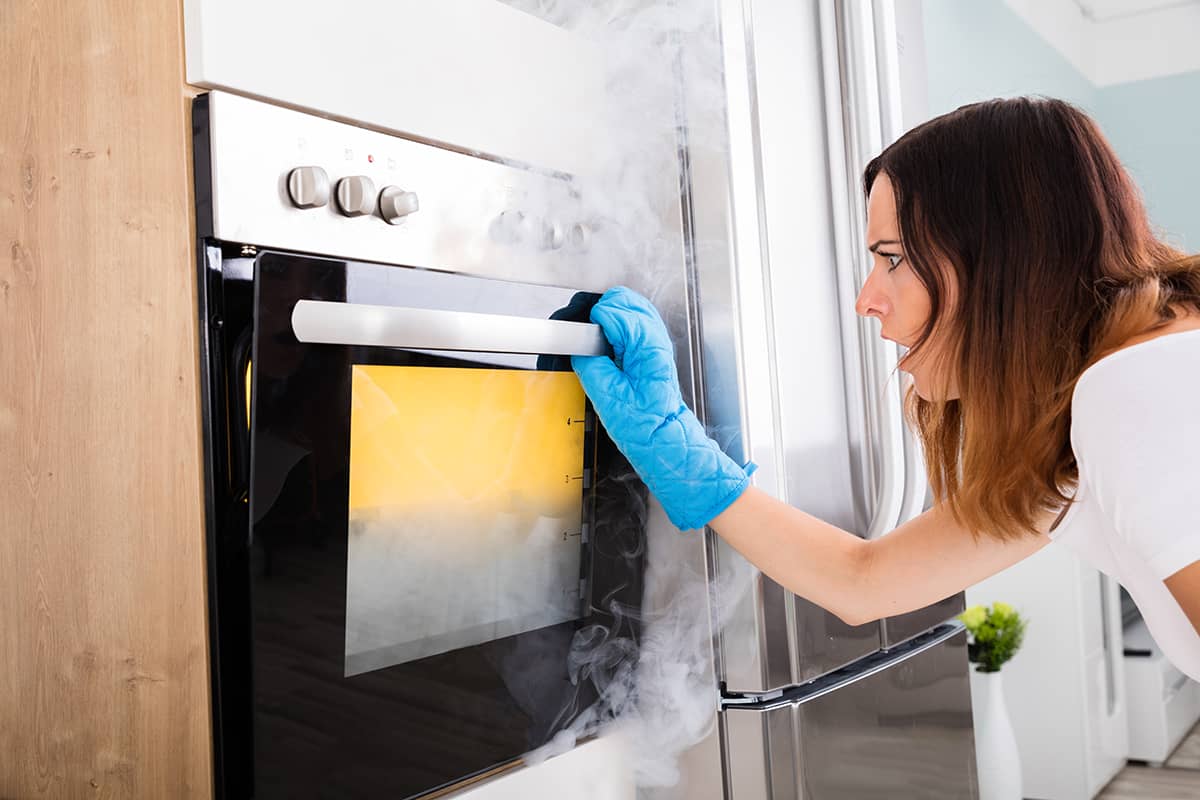Every homeowner relishes the joy of baking, roasting, and heating food with their reliable kitchen companion—the oven. However, when this appliance begins to overheat, it doesn’t only disrupt cooking routines but also poses potential safety risks.
An oven may overheat due to several reasons:
- A faulty temperature sensor
- Thermostat issues
- Malfunctioning heating elements
- Problems with the oven control board
This guide will discuss the ins and outs of an overheating oven. It will provide detailed insights into recognizing symptoms, comprehending common causes, and preventative measures.
Recognizing the Signs of an Overheating Oven
Recognizing the signs of an overheating oven is the first step to restoring your appliance’s normal function and ensuring your safety.
You need to look out for these indicators to take the necessary actions, either troubleshooting the problem yourself or seeking professional help. Let’s delve into the key signs of an overheating oven that every homeowner should be aware of.
1. Unexpectedly High Temperatures
You might notice this when your food is cooking or baking faster than usual or if it’s coming out charred or overcooked. A reliable oven thermometer can help you check the internal temperature and verify if it’s higher than the set temperature.
2. Uneven Cooking or Baking
Uneven cooking can be due to the oven overheating and then cooling down too much, causing fluctuating temperatures. This inconsistency not only disrupts your cooking process but can also be a safety concern if it leads to an extreme overheating scenario.
3. Visible Signs of Overheating
Apart from the signs related to your food’s cooking or baking, there are physical signs on the oven that can indicate overheating. These can include discoloration on the oven’s interior or exterior, the oven door getting too hot to touch, or any visible damage such as warping or blistering.
Common Reasons Why Your Oven Overheats

Here, we’ll explore common reasons that lead to an oven overheating, from temperature sensor errors to control board malfunctions.
1. Faulty Temperature Sensor
If this component is faulty or damaged, it can send incorrect signals to the oven’s control board, leading to an inaccurate heat setting. Typically, the sensor is a thin tube-like part located on the back wall of the oven. If it’s bent, damaged, or covered in food debris, it may lead to overheating issues.
2. Thermostat Issues
When you set your desired cooking temperature, the thermostat controls the heating elements to maintain the specified heat level. A broken thermostat may not shut off the heat at the designated temperature, causing the oven to get hotter than set.
3. Problems with the Heating Element
If there’s a fault with these elements, such as if they stay on continuously, it can lead to your oven overheating. Usually, the heating elements should glow red when they’re heating up and turn off when the correct temperature is reached.
If your oven’s heating elements don’t turn off or if they glow brighter than usual, this indicates a problem. A continual current supply to the heating elements can result in them remaining on, causing the oven to overheat.
4. Malfunctioning Oven Control Board
The oven control board is the “brain” of your oven, controlling its functions, including maintaining the set temperature. If the control board malfunctions, it could send continuous voltage to the heating element, causing the oven to heat beyond the set temperature.
How to Troubleshoot an Overheating Oven
This section outlines step-by-step methods to diagnose and possibly rectify common issues that may cause your oven to overheat.
1. Testing the Temperature Sensor
- Disconnect the oven from the power supply.
- Locate the sensor, usually found on the back wall of the oven.
- Check if it’s bent, damaged, or covered in food debris.
- Use a multimeter to measure the resistance. If it deviates significantly from the 1100 ohms mark at room temperature, it’s likely the sensor is faulty and needs replacing.
2. Checking the Thermostat
- Remove the thermostat from the oven after unplugging the appliance.
- Use a multimeter to check for continuity. If there’s no continuity, the thermostat is defective.
- Inspect the capillary tube, which should not be kinked or broken.
3. Evaluating the Heating Element
- Ensure the oven is disconnected from the power supply.
- Visually inspect the heating elements. They should not be broken or worn out.
- With the oven turned off, check if the elements are still glowing or emitting heat. If they are, this signals a problem.
- Use a multimeter to check for continuity. A lack of continuity indicates a faulty heating element.
Remember, replacing heating elements should be done by professionals or skilled individuals, as it involves handling potentially dangerous electrical parts.
4. Inspecting the Oven Control Board
- Disconnect the oven from the power supply.
- Visually inspect the control board for burn marks or damaged components.
- Check if the oven is overheating despite the other parts (sensor, thermostat, and heating elements) functioning correctly.
Identifying a faulty control board can be difficult, and handling these components requires professional skills due to the complex circuitry. It’s advisable to seek professional help if the control board is suspected to be the problem.
Preventative Measures to Avoid Overheating

Preventing an issue is often easier and more cost-effective than fixing it. Here, we’ll discuss several preventative measures that you, as a homeowner, can implement to avoid overheating in your oven
1. Regular Cleaning
Regular cleaning helps maintain the optimal functioning of all components and ensures accurate temperature readings.
To clean your oven:
- Remove any loose debris.
- Create a cleaning solution with baking soda and water.
- Apply the solution and leave it for a few hours or overnight for tougher grime.
- Wipe the oven clean with a damp cloth.
2. Periodic Inspection of Components
Regularly inspecting your oven’s key components can help detect potential issues before they escalate into major problems. Check the temperature sensor, heating elements, and control board for any visible damage or inconsistencies in functioning.
For example, check the temperature sensor for any food debris or physical damage. Similarly, the heating elements should not glow excessively or stay on continuously when the oven is off.
3. Proper Use and Maintenance
Using your oven correctly and maintaining it properly can prevent many common issues, including overheating. Here are some tips:
- Don’t use your oven to heat your home. This misuse can overwork the appliance and cause overheating.
- Avoid placing foil on the oven racks or the oven floor, which can disrupt heat distribution and potentially cause overheating.
- Make sure there’s enough clearance around the oven to allow for adequate ventilation.
FAQs
1. Why does my oven get hotter the longer it’s on?
Your oven’s temperature control system should maintain a steady heat, but if your oven continues to get hotter the longer it’s on, it may indicate an issue with the thermostat, temperature sensor, or control board. The thermostat and sensor monitor the oven’s temperature, and when working correctly, they communicate with the control board to turn the heat on and off to maintain the set temperature.
If any of these components are malfunctioning, the heat may not shut off at the desired temperature, causing the oven to continuously heat and become excessively hot.
2. What kitchen appliances can I use if my oven is overheating and needs repair?
If your oven is overheating and awaiting repair, several other oven alternatives can step up in its place.
- Microwave: Ideal for reheating food and cooking certain dishes quickly. Some microwaves also have convection functions that can mimic an oven.
- Slow Cooker: Excellent for stews, soups, and other dishes that benefit from long, slow cooking.
- Toaster Oven: This smaller oven can handle many of the tasks a regular oven can do, such as baking, roasting, and toasting, but on a smaller scale.
- Induction Cooktop or Hot Plate: Can be used for boiling, frying, or sautéing, just like a regular stovetop.
- Air Fryer: Useful for making healthier versions of fried foods, but can also roast and bake small amounts of food.






